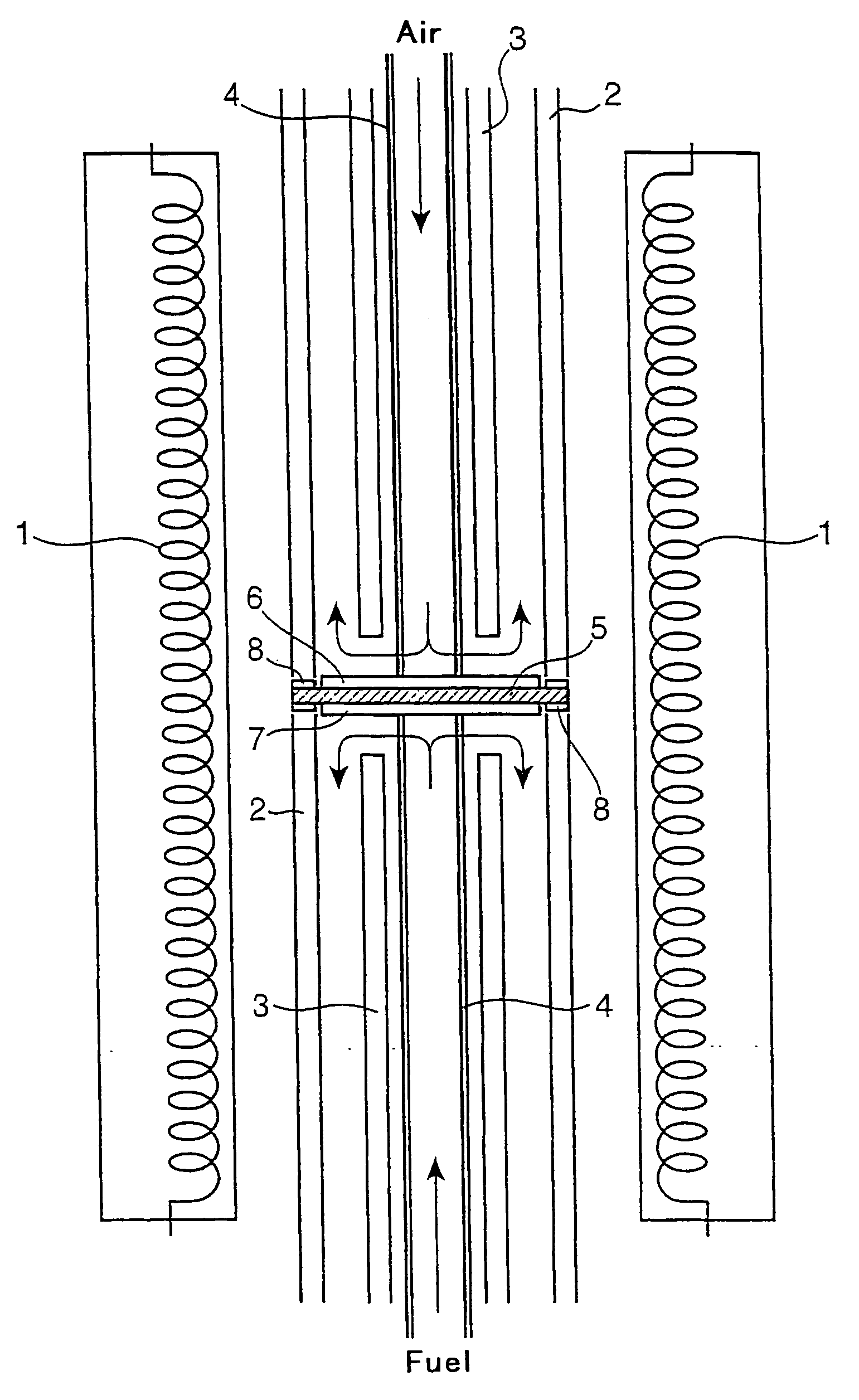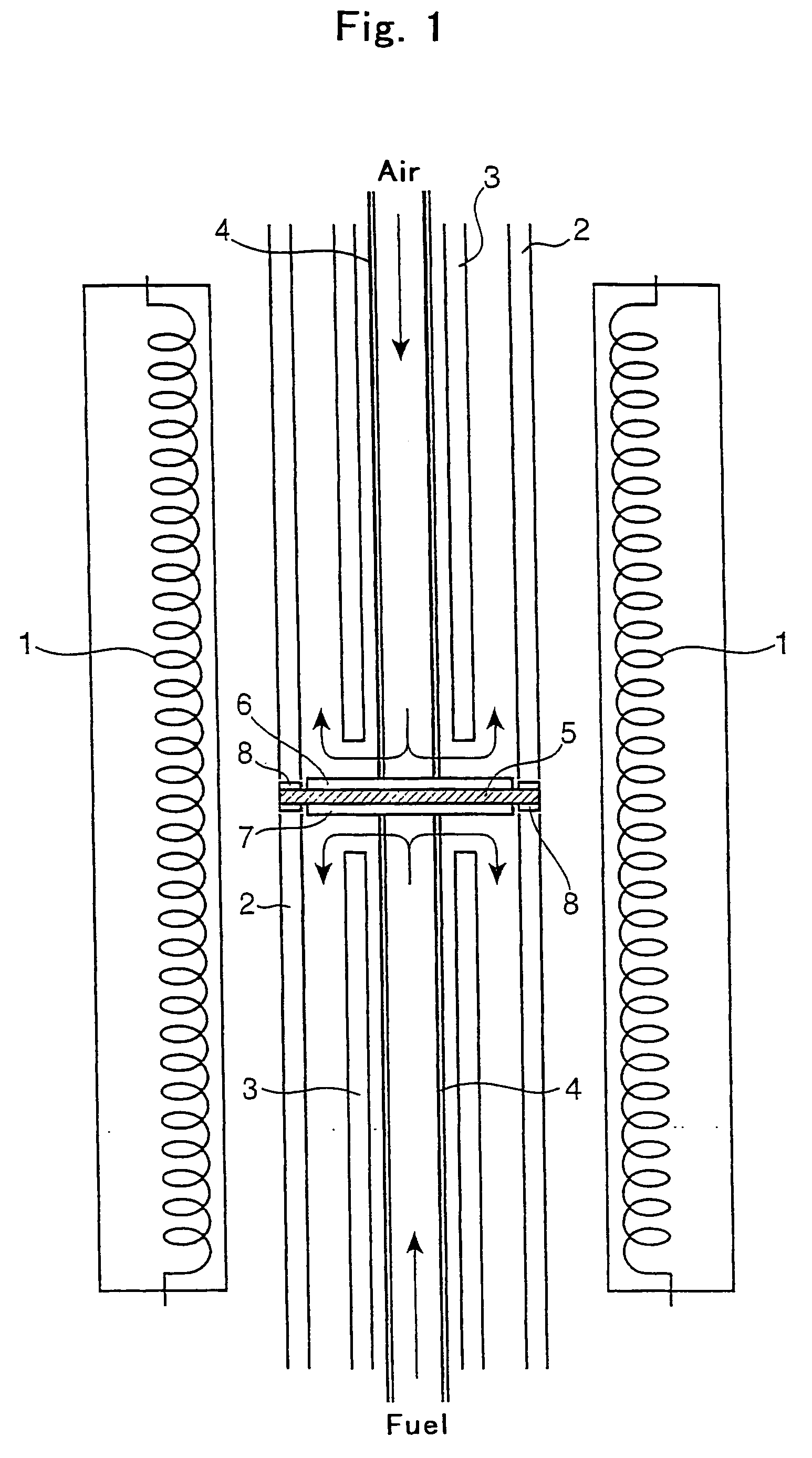Electolyte sheets for solid oxide fuel cell and method for manufacturing same
a solid oxide fuel cell and electrolyte technology, applied in the field of electrolyte sheets for solid oxide fuel cells, can solve the problems of not revealing the surface roughness and electric power generation performance, and not taking into account the relationship. , to achieve the effect of less warpage and high productivity
- Summary
- Abstract
- Description
- Claims
- Application Information
AI Technical Summary
Benefits of technology
Problems solved by technology
Method used
Image
Examples
example 1
[0085] Together with mixed powder of 90 parts by mass of 8YSZ powder (available from Sumitomo Osaka Cement Co., Ltd., under the trade name “OZC-8Y”; d50, 0.4 μm and d90, 1.8 μm) and 0.5 part by mass of high purity alumina powder (available from Taimei Chemicals Co., Ltd., under the trade name “TMDAR”), as raw material powder (A), 15 parts by mass, in terms of solid content, of a binder composed of a methacrylic copolymer (molecular weight, 30,000; and glass transition temperature, −8° C.), 1 part by mass of sorbitan trioleate as a dispersant, 2 parts by mass of dibutyl phthalate as a plasticizer, and 50 parts by mass of a mixed solvent of toluene / isopropanol (mass ratio=3 / 2) as a solvent were put into a nylon pot charged with zirconia balls, and milling was continued for 35 hours to give a slurry.
[0086] To this slurry was added 10 parts by mass of powder (d50, 1.6 μm and d90, 7.3 μm) obtained by provisionally calcining the same YSZ powder as described above at 1100° C. for 3 hours ...
example 2
[0092] An 8YSZ electrolyte sheet, which was a square, about 40 mm on a side, and 0.3 mm thick, was prepared in completely the same manner as described above in Example 1, except that a surface roughened PET film with the surface roughness on the surface to be coated being 12.4 μm in Rz and 1.8 μm in Ra was used.
example 3
[0093] An electrolyte sheet, which was a square, about 40 mm on a side, and 0.3 mm thick, was prepared in the same manner as described above in Example 1, except that the same 8YSZ powder as the raw material powder (A) was used as the raw material powder (B) and milling was continued for 40 minutes after addition of the raw material powder (B).
PUM
| Property | Measurement | Unit |
|---|---|---|
| Ra | aaaaa | aaaaa |
| Ra | aaaaa | aaaaa |
| roughness | aaaaa | aaaaa |
Abstract
Description
Claims
Application Information
 Login to View More
Login to View More - R&D
- Intellectual Property
- Life Sciences
- Materials
- Tech Scout
- Unparalleled Data Quality
- Higher Quality Content
- 60% Fewer Hallucinations
Browse by: Latest US Patents, China's latest patents, Technical Efficacy Thesaurus, Application Domain, Technology Topic, Popular Technical Reports.
© 2025 PatSnap. All rights reserved.Legal|Privacy policy|Modern Slavery Act Transparency Statement|Sitemap|About US| Contact US: help@patsnap.com


